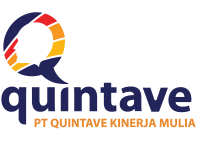In today’s highly competitive job market, organizations cannot afford to be reactive when it comes to talent acquisition. When a key role suddenly opens, the inability to fill it quickly can lead to disruption, delays, and lost business opportunities. That’s why building a long-term strategy through a well-managed talent pool and talent pipeline is no longer optional—it’s essential.
Yet many organizations still misunderstand the difference between these two critical talent strategies. Understanding how both function—and how they complement each other—is a strategic advantage for building a sustainable and agile workforce.
What Is a Talent Pool and Why Does It Matter?
A talent pool is a pre-qualified, actively maintained database of potential candidates who have been identified as having the right mix of competencies, values, and cultural fit. It acts as a proactive recruitment asset that helps organizations respond quickly and effectively when hiring needs arise.
With a well-managed pool, companies can:
- Reduce time-to-hire.
- Minimize recruitment costs.
- Build long-term workforce resilience.
- Improve access to high-quality talent.
But a talent pool isn’t just a static list of resumes. According to the principles of Requisite Organization by Dr. Elliott Jaques, effective workforce planning begins with role complexity aligned with individual capacity. That means an effective talent pool must be continuously curated—via assessments, regular engagement, and career mapping—to remain relevant and powerful.
🔗 Reference: Prevue HR System – Quintave
What Is a Talent Pipeline?

A talent pipeline is an active, future-focused process where potential candidates are not only identified but also developed. These individuals are engaged through internships, mentoring, networking, and targeted skill-building to prepare them for key roles.
The benefit of a talent pipeline is that it nurtures readiness. Candidates already know the company culture and expectations. They can step in faster, reducing onboarding time and increasing productivity.
Talent Pool vs. Talent Pipeline – Which One Works Best?
Both talent pools and talent pipelines play crucial roles in workforce planning, but which one is better depends on an organization’s needs and strategy. The answer lies in understanding that both serve different but complementary purposes:
- A talent pool offers breadth—an agile bench of pre-qualified professionals across roles. It is ideal for companies that want a broad selection of potential candidates without immediate hiring needs. It allows businesses to maintain a database of skilled professionals, ensuring a steady supply of talent for future openings.
- A talent pipeline offers depth—a stream of high-potential candidates being groomed for specific positions. It is more proactive, focusing on engaging and developing candidates over time. It involves ongoing relationship-building, training, and mentorship, making it a better option for companies with high turnover or niche roles requiring specialized skills.
At Quintave Kinerja Mulia, we believe that a strong talent pool feeds into a well-maintained talent pipeline, ensuring a seamless hiring process. Combining both ensures organizations are ready to respond now and evolve later.
🔗 Learn more: Talent Pool Capability – Quintave
How Quintave Helps Build Talent Pool Capability and Future Potential
The Talent Pool Capability and Future Potential program by Quintave offers a science-based approach to building robust workforce structures. Leveraging assessments from Prevue HR System and guided by Requisite Organization theory, we help companies:
- Identify high-potential talent through cognitive, personality, and motivation assessments.
- Align individuals to roles based on their capacity and readiness.
- Calibrate leadership readiness using the “Manager-once-Removed” principle.
- Create clear, fair, and data-backed career paths.
When implemented effectively, a talent pool is no longer a backup plan—it becomes the core of succession planning, internal mobility, and organizational agility.
Why Consult with Quintave?

Through our consulting services, Quintave helps organizations translate workforce challenges into strategic solutions. We work closely with HR and leadership teams to:
- Design customized talent pool strategies.
- Integrate assessment tools like Prevue HR into performance and succession planning.
- Build internal capability for long-term talent development.
- Align human capital planning with organizational complexity.
Final Thoughts
In uncertain times, the most resilient organizations are not those who react best—but those who plan ahead. A future-ready business requires a proactive approach to human capital, and that begins with a well-structured, insight-driven talent pool strategy.
With Quintave’s proven frameworks, cutting-edge assessment tools, and expert consultants, your organization will not just fill roles—but build leaders, reduce attrition, and drive long-term success.
References:
- Jaques, E. (1989). Requisite Organization. Arlington, VA: Cason Hall & Co.
- Prevue HR System – Global
- Prevue HR System – Quintave Indonesia
- Talent Pool Capability and Future Potential – Quintave
- Talent Pool vs. Pipeline – Jouku
- HireQuotient Blog





